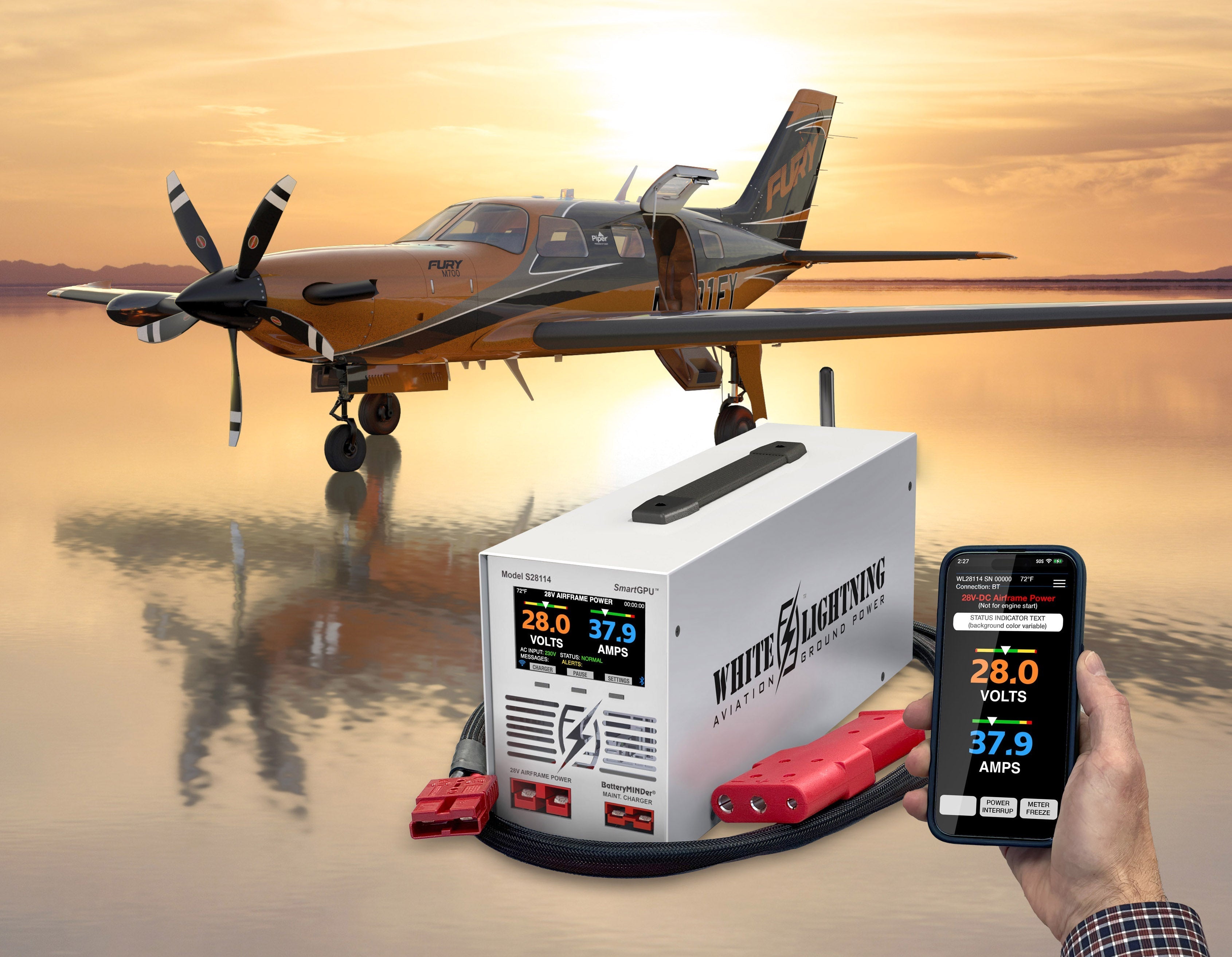(Adapted from the white paper: “Aviation Battery Care and Longevity”)
Stop Early Failure: The Top 3 Aviation Battery Lifesavers
Aviation batteries are critical to safe flight—powering starts, backing up avionics, and serving as the last line of defense in an emergency. While all batteries age, the way we maintain them can mean the difference between premature failure and years of reliable service. Here are the three most essential principles every aircraft owner, operator, or A&P mechanic should understand.
1. Precision Charging Is Critical — Not Optional
Unlike automotive batteries, aviation batteries must meet strict airworthiness standards—specifically, the ability to maintain 85% of rated capacity. Achieving this reliably requires a specialized charging scheme, not just any trickle charger.
Modern Battery Maintenance Charging (BMC) uses smart technology to:
-
Deliver temperature-compensated voltage,
-
Prevent overcharging or undercharging,
-
Dissolve harmful sulfation using pulse charging.
These steps are vital because aviation batteries are built with thin lead plates to save weight—great for aircraft, but more prone to wear if charged improperly. Smart BMC devices, like the BatteryMINDer or White Lightning BMC24, can extend battery life 2–3 times beyond the norm when used correctly.
2. Sulfation Is the Silent Killer
One of the most common reasons aviation batteries fail early is due to sulfation—a chemical process where lead sulfate crystals form on the battery plates when it's left undercharged. Sulfation:
-
Increases internal resistance,
-
Decreases capacity and cranking power,
-
Becomes irreversible over time if not addressed.
The best prevention? Keep your battery fully charged, especially during long periods of inactivity. Smart chargers help by:
-
Monitoring voltage drop during downtime,
-
Recharging automatically on condition,
-
Gently reversing early-stage sulfation with pulsed current.
If you're storing your aircraft, skipping proper maintenance charging can significantly shorten battery life and lead to unreliable starts.
3. Not All Flight Time Equals Charging Time
It’s a myth that flying regularly eliminates the need for battery maintenance charging. Why?
-
Aircraft bus voltage doesn’t adjust dynamically. It typically stays fixed around 28.2V for 24V systems—adequate for bulk charging but not low enough for float charging, especially as temperature changes.
-
Most systems lack temperature compensation, leading to overcharging in hot conditions and undercharging in cold ones.
-
Batteries don’t always fully recharge after flight—especially with turbine starts and short legs.
Even frequent fliers should verify their aircraft voltage regulation and may benefit from a scheduled or delayed maintenance charge cycle to top off the battery safely and completely.
Final Thoughts: Maintenance Is a Mission-Critical System
Maintaining an aircraft battery isn’t just a matter of convenience or cost—it’s a flight safety issue. Reliable engine starts and emergency electrical backup depend on keeping the battery at peak condition. A smart maintenance strategy will maximize longevity and safety:
-
Proper temperature-compensated charging,
-
Sulfation prevention,
-
Voltage regulation verification,
Want to level up your battery care? Consider a smart battery care system that allows remote preflight charging, automatic scheduling, and battery health monitoring.
Download the full white paper: “Aviation Battery Care and Longevity” for free!


